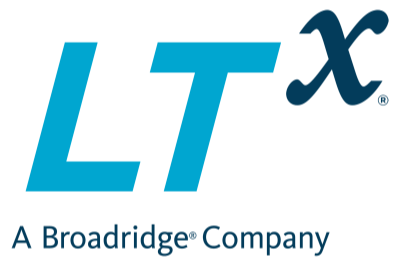Fixed Income Leaders Summit Live Coverage Day 2
#FILS
Day 2, June 20th 2019
8.30 - CIO KEYNOTE INTERVIEW Evaluating top investment trends that dominate fixed income markets.
Moderator:
David Saab, Former Managing Director, JP Morgan
Speakers:
Christopher Gunster, Head of Fixed Income Portfolio Management, U.S. Trust | Robert Tipp, Managing Director, Chief Investment Strategist, PGIM | Anne Walsh, CIO, Fixed Income, Guggenheim Partners
• Why did we get the 10 year treasury forecast wrong? Market was of the view that the Fed was going to raise rates, GDP was strong and expectations were that this would lead to inflation, but we’ve seen the opposite. Panelists debated the significance of inflation, but agree that it all depends on the Fed doing its job right.
• High inflation and high interest rate world of the early 80s was an abnormal environment, usually driven by bad policy or wars. Now, in Europe and Asia, we are seeing negative yield and buying bonds at negative yield is considered by panelists to be storing money, or paying custodians and the sovereign issuer to safe keep assets. Investors are coming to the US to find that yield following the impact of non-central bank policy and the impact that has had.
• Panelists are concerned with over leverage in the credit market, and have less faith in credit rating agencies. The triple B market is below investment grade levels, and if a market event occurs, we could see substantial down grade of the marketplace. In the non investment grade space, a lot of Asian investors have come into the credit market, and if they are unlikely to stay and hold securities upon a downgrade, the market could see a cascade effect with big volatility.
9:50 FIRESIDE CHAT: The next big shifts in fixed income trading: How are alternative liquidity providers, the growing roles of exchanges and platforms, and next generation of traders altering the landscape in fixed income?
Moderator:
David Bullen, Director, Lorgwood Limited
Speakers:
Lee Sanders, Head of Execution FX and UK & Asia Fixed Income Trading, AXA Investment Management | Dwayne Middleton, Head of Global Fixed Income Trading, Morgan Stanley Investment Management | Carl James, Global Head of Fixed Income Trading, Pictet Asset Management
• Relationship management with counterparties has evolved with the number of liquidity providers or trading venues that have come to market in recent years, and buy-side firms must be able to identify strength areas with these parties to stay relevant and drive change.
• Talent management is vital for buy-side firms and teams with diversity of thought and experience enable greater agility and innovation both from a trading and technology perspective. Traditional “pyramid” structures should be reconsidered to take advantage of new ideas and talent capabilities.
• Data science and artificial intelligence will have a huge impact on fixed income trading, materially changing buy-side trading strategies and increasing computing power at scale. Buy-side traders will likely take on more of a risk management role as a result.
10.10 CENTRAL BANK KEYNOTE The 2019 Treasury debt management strategy - Nicholas Steele, US Department of the Treasury
• TIPS programme has announced several enhancements for 2019. It introduced a second 5-Year new issue in October and increased auction sizes in order to reduce gas in the TIPS yield curve, improve liquidity and pricing of inflation seasonality, facilitate curve and breakeven positions, and meet structural demand for 5-year TIPS. Share of TIPS issuance will now be more balanced between 5-year and 10-year maturities and across calendar quarters, and the 30-year TIPS will now auction every 6 months with increased auction sizes to maintain a stable float.
• The TRACE trade reporting compliance engine has proved to be valuable to the US Treasury in terms of providing insights on market functioning. Working alongside FINRA, the US Treasury is exploring potential policy for some form of dissemination of the data, as it also looks to enhance the quality of the data through consultation with ATSs and dealers.
11:00 SPECIAL GUEST KEYNOTE: Big data in 2019: Does search data know something Wall Street and Government data does not?
Speakers:
Apurv Jain, ex co-founder Econ Measurement Group, MSFT, Visiting researcher Harvard Business School
• The three key questions to ask for alternative data are: Is this important? Is this unique? Is this more accurate than the data I already have? So far, there are unsatisfactory answers to these three questions.
• Asset managers will more often be more concerned about what it will cost for this extra alternative data.
• Suggestions for how to approach alternative data include extensive data cleaning and curation, test data prediction ability on macro statistics, focus on areas where Government data is known to be less effective, and aim to foster creative tension among a team with different expertise bases.
12.00 INDUSTRY INNOVATION The future of the fixed income ecosystem: Investigating alternative liquidity
Speakers:
Matt Berger, Global Head of Fixed Income Trading, Jane Street
• · Alternative liquidity in fixed income can be found in ETFs, electronic platforms and portfolio trading, according to Jane Street. A portfolio trade is a basket of 10-100 bonds, which can be either one or two-sided and executed in a single transaction with a single liquidity provider. Benefits include cost efficiencies, customisation, speed and certainty.
• · Portfolio trading represents a massive area of growth for Jane Street as more firms trade portfolios as bonds and, more importantly, have a positive experience doing this. As a result, traders say that their percentage of portfolio trading will be higher. Jane Street’s global portfolio trading volumes have surged from $3.9 billion in Q3 2018, to $14.9 billion in Q2 2019.
12:20 ALL STAR INTERVIEW: How are the buy-side and sell-side working better together to be smarter, faster and more cost efficient and what additional benefits can this bring to the buy-side?
Moderator:
Kenneth Monahan Senior Analyst Greenwich Associates
Speakers:
George Runsak Head of Global Fixed Income Wells Fargo Wealth Management, Steven Divittorio Head of Public Fixed Income Trading Barings, Mark Betteridge Global Head of Fixed Income and Currency Analytics Bloomberg
• Efficient and open communication between the buy- and sell-sides is the key ingredient to ensure relationships develop to the benefit of both parties.
• The standardisation of data will play a huge role in the advancements in automation and artificial intelligence which the sell-side are adopting, which can benefit the buy-side in more ways than just for execution. Fixed income markets seem to be following the equity model in this space.
• Optimising information sharing methods will also be vital and those sell-side institutions that make progress in this area will have a distinct advantage and provide better service for their buy-side counterparts.
12.50 - INDUSTRY PRESENTATION Thinking beyond the bond: Engineering efficiency in fixed income portfolios for today's cost pressure environment - BlackRock iShares
Speakers:
Stephen Laipply Managing Director, is the Head of U.S BlackRock, iShares
• · When building your portfolio, you can look at each individual bond and say there was a very good reason that you want that bond in your portfolio. But idiosyncratic alpha properties and exposures in that starts to cancel out at the aggregate fund level, leaving beta. Investors should source beta and factor components of portfolio efficiently, and shift focus to highest conviction positions.
• · ETFs and index exposures should be considered active tools, moving away from the active versus passive debate and to understand that ETFs are very useful. It’s a way of organising the bond market into building blocks that can be used to build efficient portfolios, with the ability to move risk rapidly and in great size without going to the underlying market. That is a tool which hasn't been available in the market before and has powerful implications.


























